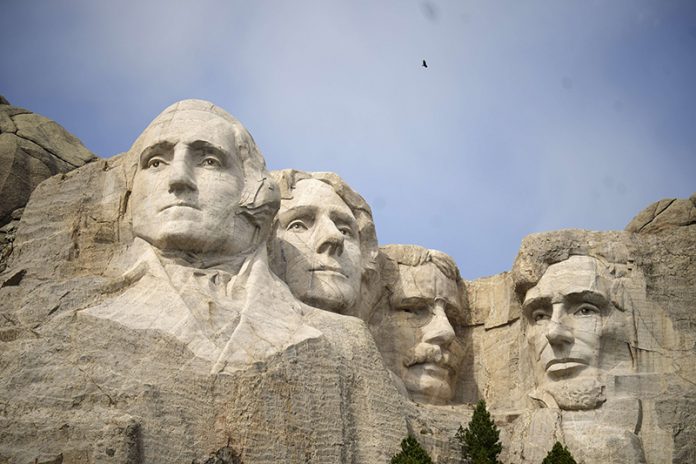
By Heather Hollingsworth
Associated Press
Fewer planes and helicopters will be flying tourists over Mount Rushmore and other national monuments and parks as new regulations take effect that are intended to protect the serenity of some of the most beloved natural areas in the United States.
The air tours have pitted tour operators against visitors frustrated with the noise for decades, but it has come to a head as new management plans are rolled out at nearly two dozen national parks and monuments.
One of the strictest yet was recently announced at Mount Rushmore and Badlands National Park, where tour flights will essentially be banned from getting within a half mile of the South Dakota sites starting in April.
“I don’t know what we’re going to be able to salvage,” complained Mark Schlaefli, a co-owner of Black Hills Aerial Adventures who is looking for alternative routes.
The regulations are the result of a federal appeals court finding three years ago that the National Park Service and the Federal Aviation Administration failed to enforce a 2000 law governing commercial air tours over the parks and some tribal lands. A schedule was crafted for setting rules, and many are wrapping up now.
But now an industry group is eying litigation, and an environmental coalition already has sued over one plan. The issue has grown so contentious that a congressional oversight hearing is planned for Tuesday.
Critics argue that the whirr of chopper blades is drowning out the sound of birds, bubbling lava and babbling brooks. That in turn disrupts the experiences of visitors and the tribes who call the land around the parks home.
“Is that fair?” asked Kristen Brengel of the National Parks Conservation Association, noting that visitors on the ground far outnumber those overhead. “I don’t think so.”
The air operators argue they provide unrivaled access, particularly to the elderly and disabled.
“Absolutely exhilarating, a thrilling experience” is how Bailey Wood, a spokesman for the Helicopter Association International, described them.
Sightseeing flights got their start in the 1930s as crews building the massive Hoover Dam on the Arizona-Nevada border asked the helicopter pilots working on the project to give their families flyovers, Wood said.
“It took off from there,” he said, jokingly adding, “Sorry, aviation pun.”
The issue hit a tipping point at the Grand Canyon in 1986 when two tour aircraft collided over the national park in Arizona, killing 25 people. Congress acted the next year and a plan was enacted to designate routes and minimum altitude for canyon flights.
Congress passed another round of legislation in 2000 with a goal of setting rules in other national parks. But bureaucratic difficulties and delays stalled compliance.
The Public Employees for Environmental Responsibility and the Hawaii Island Coalition Malama Pono sued, demanding something be done. Historically, some of the nation’s busiest spots for tour operators are Hawaii Volcanoes National Park, which is home to one of the world’s most active volcanoes, and Haleakala National Park.















